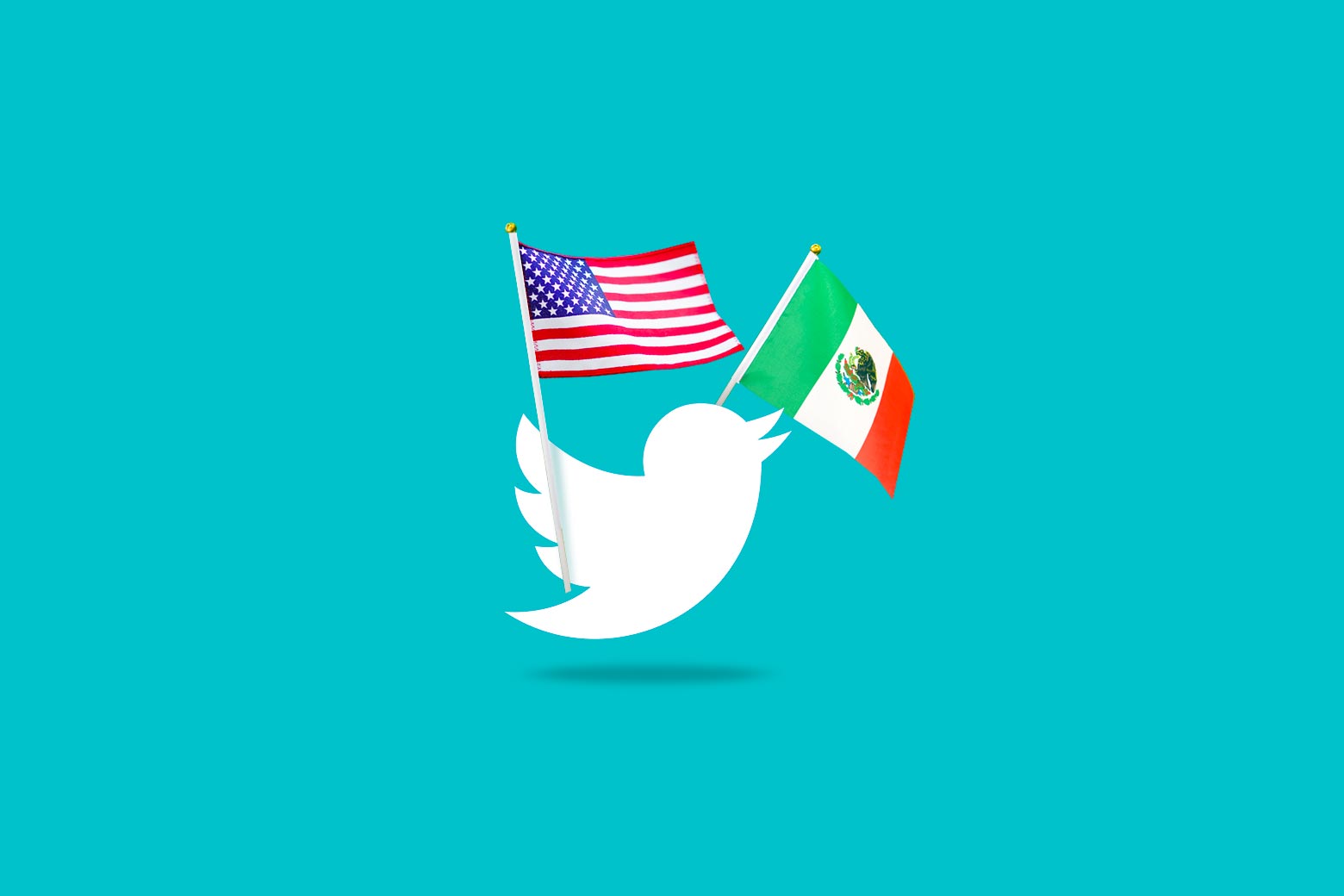If you were Donald Trump’s ambassador to Mexico, you might be forgiven for lying low. Instead, in early September 2019, Christopher Landau, the newly appointed U.S. ambassador to Mexico, posed a challenge to Mexican Twitter users. His counterpart in Greece, he wrote, had almost 150,000 followers in a country with a population of 10 million, whereas the @USAmbMex account only had 40,000 followers in a country of 130 million. “This is an outrage! … Mexico has to be #1!” he tweeted in Spanish.
The following day, Landau’s followers numbered more than 76,000. Today, he has over 245,000—and his account offers an unexpected lesson in American digital diplomacy.
Landau’s followers come, we might assume, to learn about U.S. policy and the binational relationship—but they stay for the memes, food pictures, GIFs, and charisma. Or perhaps it’s the other way around. Either way, Landau, the representative of a president famous for his attacks against Mexico, has leveraged social media to present a starkly different outreach to our southern neighbor. He has cultivated a solicitous, admiring public persona, inviting people to ask questions about visas or U.S. policy. Often, he responds personally. Incredulous followers argue there’s no way he runs his own account, but he insists that he does.
When I interviewed him via Zoom (yes, I first reached out to him on Twitter), Landau said he wasn’t a heavy social media user prior to his arrival in Mexico in August 2019. Twitter certainly played no role in his Washington legal practice, which has included arguing nine cases in front of the Supreme Court and clerking for justices Clarence Thomas and Antonin Scalia. But once in Mexico and in control of the @USAmbMex Twitter handle, Landau started tweeting photos of his explorations of Mexico City: his family at the trajineras (wooden boats) in the canals of Xochimilco, a lucha libre–themed bottle opener he purchased at a museum, his son behind the counter of a juice stand in the city center.
The likes on these posts tallied in the thousands, and for Landau it was “a very revealing moment, because it kind of underscored to me just how many people you can reach that way,” he said. “I think people enjoyed feeling that the American ambassador was lifting the curtain a little bit.”
Fast forward almost a year, and Landau would say he spends about an hour, an hour and a half on Twitter each day—in car rides, at night, after checking email. His tweets often make headlines in Mexico City, from the simple act of buying tortillas at a U.S. supermarket. to eating chapulines (grasshoppers) in celebration of reaching 200,000 followers, to determining the preferred word for hair (cabello vs. pelo).
Landau also uses his Twitter to “shoot back a little bit” against posts or news coverage with which he disagrees, often using “fake news” GIFs that feature President Donald Trump. (He was advised when he entered his position not to get into “little Twitter battles,” he told me, but he decided “it’s actually helpful to kind of nip a story in the bud.”)
Mexicans and Americans alike have been surprised by Landau’s personal touch on Twitter. “To be honest, many of us here in Mexico were extremely nervous about who would be appointed to represent this administration, but … people really like you,” Dan Defossey recently told Landau in an interview streamed on Facebook. Defossey, an American expat in Mexico City, owns the self-deprecatingly named Pinche Gringo restaurant and hosts a show by the same name (which translates, the Los Angeles Times noted, as “not quite an F-bomb but … a crasser version of ‘Freakin’ Gringo’ ”). When Landau appeared on the The Pinche Gringo Show!, he sported what he called an “Austin Powers jacket” complete with green paisleys, joking that he needed to be “hip” for the audience.
What Defossey looks for in an ambassador to represent him and the other million or so Americans living in Mexico, he told me, is “somebody who’s humble, somebody who can connect, somebody who wants to go out there in the field”—all things he’s seen in Landau.
Landau connects directly with both Mexicans and Americans in Mexico by responding to followers’ questions. In March, the embassy set up a Twitter for its consular section, which helps Landau field the voluminous queries related to immigration and visas.
Landau makes clear that he doesn’t promise to be a “full-service, 24/7 call center.” But he does the best he can, and he believes the time he invests yields big returns. Twitter allows him to be aware of the issues on people’s minds, feedback that he says informs the embassy’s priorities.
“I’m not saying necessarily that Twitter is representative of all the voices of Mexico. I know it’s not,” he said. “But it certainly gives me a much broader cross-section than I would have access to otherwise.”
There have been other ambassadors around the world who’ve deployed social media creatively, of course, probably none more famously than Michael McFaul, former U.S. ambassador to Russia. For McFaul, who used a personal handle rather than an institutional one, Twitter was a way to bypass official Russian media hostility and connect directly with people as well as to acquire a valuable window into Russian society, an “explosion of personalities and information that I just did not know about,” he told me when we spoke via Zoom.
Before he left Washington for Moscow in 2012, McFaul, who now directs Stanford’s Freeman Spogli Institute for International Studies, met with Alec Ross, senior adviser for innovation to then–Secretary of State Hillary Clinton. At the time, “there were not a lot of people on Twitter generally,” he remembered, and certainly not many ambassadors. Ross impressed upon him two big lessons: You need to interact, and you need to become a public figure.
“Your personality on Twitter and what you communicate has to not just be, you know, Ambassador McFaul. It has to be Mike McFaul. It has to be dad McFaul. It has to be Stanford professor McFaul. It has to be from-Montana McFaul,” he told me. “This will sound very conventional now, but in 2012, these were all revolutionary ideas.”
McFaul’s Twitter presence was a blended one: He didn’t shy away from using the platform for “tough messaging” and direct criticism of the Russian government. But in doing so, he always tried to outline a clear distinction for his followers: Criticizing the government was different from criticizing the country, a country for which he had great love and respect.
One of the challenges tied up in Twitter diplomacy, as McFaul writes in his book From Cold War to Hot Peace, is that “reach and presence … do not translate neatly into impact.”
It’s hard to quantify the ripple effect of a tweet on the larger goal of any given ambassador, of any given embassy: to advance American interests.
That’s a goal that’s inherently abstract. Landau puts it more concretely: “What is the job of an ambassador? At the end of the day, I think it’s really about communication,” he said. And that makes Twitter, in his mind, “one of the most important parts” of the job.
Though communication is engrained as a priority within all U.S. missions abroad (embassies are broken into five sections: consular, management, political, economic, and public diplomacy, which includes media relations, social media, and event planning), highly personalized communication is not standard practice. (I formerly worked as a public diplomacy intern at the U.S. Embassy in Madrid, where my job included writing tweets about entrepreneurship workshops and making Fourth of July graphics on Canva.)
But personalized communication is effective for a simple reason: Trying to move things forward in the trenches of faceless foreign government bureaucracy—especially really important, life-changing things, like getting a visa to work or study or see your family—feels like screaming while underwater. Landau’s Twitter account suggests that someone might hear you.
The contrast between the coldly institutional voice of the remote U.S. government and that of its simpático ambassador is at times visible in the gap between the U.S. Embassy in Mexico account and the ambassador’s. In January, the embassy shared a photo of Donald Trump glaring in front of the border fence, with a caption that translates to “No more. No more false asylum. No more ‘catch and release.’ No more illegal entry in the U.S. #DontPutYourselfAtRisk.”
Several users commented on the tweet and tagged Landau’s account, unable to reconcile the embassy’s message with the messages of the ambassador who’d seemingly befriended them. “What would you say about this?” they asked him. “What kind of ‘diplomacy’ is this?” (The campaign has since moved to “friendlier” messaging, even featuring mariachis: “Mexico is music! … Migrating without documents puts your life at risk.”)
Another way to think about the jovial social media persona of the U.S. ambassador is as a distraction—purposeful or not—from the often-unpalatable rhetoric and policies toward Mexico emanating from the White House. Carlos Bravo Regidor, the director of Periodismo CIDE and a columnist for Mexican news outlets Gatopardo, Reforma, and Expansión, believes the ambassador’s high-wire act is “somehow eroding the gravitas of the position.” For Bravo Regidor, Landau’s social media identity of the “Mexican-curious gringo” doesn’t line up with any specific policy goals that ambassadors can—and have—pushed in Mexico via traditional and social media, such as his predecessor Roberta Jacobson’s focus on condemning violence against journalists. “If you don’t have a substantial agenda to make public or to push through public channels … maybe public platforms like social media are not your natural habitat,” he said.
Landau has embraced the fact that tweeting freely—and at times “pushing the boundaries”—is “a little bit like you’re playing with fire.” Some of the liberty he has with his account comes from the fact that he’s not a career foreign service office but rather a political appointee who will eventually return to his D.C. law practice. When he thinks back to his father, who made a career in the State Department and served as U.S. ambassador to Paraguay, Chile, and Venezuela, “I don’t know that he would have felt the same degree of freedom in using Twitter as I do,” Landau said.
Landau may also be freer to push boundaries on Twitter than other contemporary ambassadors because he is a man. Researchers Cecilia Farfán Méndez and Amalia Pulido recently analyzed responses to tweets surrounding Mexican President Andrés Manuel López Obrador’s visit to Washington from both Landau and Martha Bárcena, Mexico’s ambassador to the U.S. They found that responses to Bárcena’s tweets were more likely to contain negative, violent, or aggressive words, amounting to “yet another example of growing evidence of mistreatment of women on online platforms,” they wrote in Reforma’s Mexico Today.
Still, Landau’s tweets have at times sparked flames in directions he didn’t intend. Memorably, in his early days in Mexico, he posted a selfie from the garden of the Frida Kahlo house. While he admired Kahlo’s “free and bohemian spirit,” he wrote, he didn’t understand her passion for “Marxism/Leninism/Stalinism.” (She had photos of Stalin, Marx and Lenin, along with Mao Zedong and Friedrich Engels, in her bedroom).
“Didn’t she know about the horrors committed in the name of that ideology?” Landau wrote.
The response to his jab at the Mexican icon was mixed, including one tweet written by Pablo Rendón: “When he finds out about gringo interventionism in Latin America, he’s going to have a heart attack on us.”
Thinking back, Landau remembers the incident as “an important lesson that particularly if you want to have a tweet that is somewhat controversial … you’ve got to have a little red flag that goes up in your head to say like, maybe you want to hold off on hitting that little blue button to send that tweet.”
But thus far, the mechanism to raise that “little red flag” is personal, not institutional—social media is one of the few unfiltered ways ambassadors can communicate, Landau said. If he wanted to write an op-ed for a Mexican newspaper, for example, he would have to send it back to D.C. for approval.
“It kind of goes to show that the mechanisms the State Department has in place to control messages are somewhat out of date, because you have to get approval for an op-ed but not for a tweet,” he told me. “We may be living in kind of a brief moment of Twitter freedom. … I hope it continues, because for me, it’s been one of the most rewarding parts of my job. But, you know, you do it at your own peril.”
I didn’t fully appreciate the power of Landau’s presence on Twitter until I recently asked him a visa-related question myself. As I waited for a response, my phone lit up with notifications from other users. Two people took it into their own hands to offer an answer, while others liked my tweet, demonstrating, I imagined, some sort of unspoken solidarity in this online gathering place. And yet, the account isn’t even really Landau’s, despite how much of himself he’s poured into it. It’s an institutional, State Department account, and eventually, he’ll hand the password—the keys to the public square—over to the next ambassador.
But for now, Landau doesn’t like to think much about that.
He’s focused on a more immediate goal: beating the U.S. ambassador to Kenya, who has over 323,000 followers (and whose own history on Twitter has been controversial). Landau thinks he can do it, he told me, “but you know, I’ve got to have some good material to get there.”
Future Tense is a partnership of Slate, New America, and Arizona State University that examines emerging technologies, public policy, and society.
https://www.bidd.org.rs/twiplomacy-2020%e2%80%8a-%e2%80%8ahow-world-leaders-tweeted-the-coronavirus/












